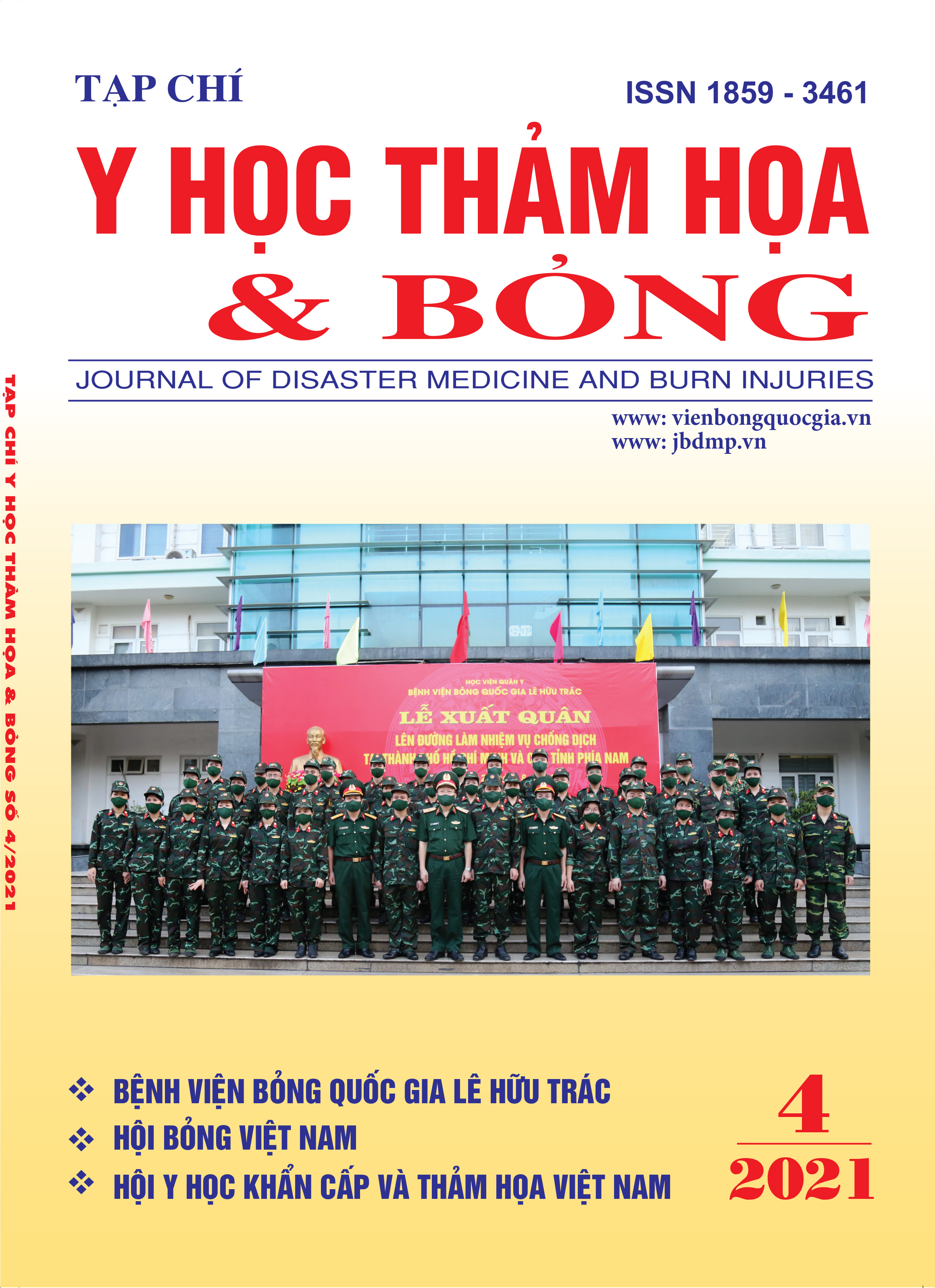Characteristics and influence of gender on outcomes of elderly burn patients.
Main Article Content
Abstract
Objective: The aim of this study was to investigate characteristics and relationships of gender with outcomes of elderly burn patients.
Patients and method: A retrospective study was conducted on 629 elderly burn patients (65 ≥ years old) admitted to the National Burn Hospital over a period from 2015 to 2019. Demographic data, burn features and outcomes of male and female groups were compared.
Results: Men accounted for 51.03% and women accounted for 48.97% of the total patients. Years old of female patients were older than men (75 years old vs 72 years; p < 0.05) with the main causal agent was wet heat (56.49%) while in men, it was due to dry heat (57.94%; p < 0.01).
The incidence of deep burn injury was remarkably higher in male patients (66.67% vs. 54.87%; p < 0.05). Burn extent, full-thickness burn area, the incidence of inhalation injury and the number of surgical interventions was insignificant differences across genders (p > 0.05). The average treatment cost for 1% of deep burn area was significantly higher in male patients (p < 0.05). The mortality rate of male patients was higher (13.08% compared with 9.74%), the time point of death after the burn was earlier (9.5 vs 11.5 days) but the difference was not statistically significant.
Conclusion: Amongst elderly burn patients, the common causal agent was humid heat for females and dry heat for men. Male patients appeared to suffer a higher rate and treatment cost for deep burn injury. However, outcomes were not significantly different across genders.
Article Details
Keywords
Burn, elderly, gender, outcomes
References
2. Perkins M, Abesamis GM, Cleland H, Gabbe BJ, Tracy L M. Association between gender and outcomes of acute burns patients. ANZ Journal of Surgery. 2020; 91(1-2): 83-88.
3. Mabrouk A, Maher A, Nasser S. An epidemiologic study of elderly burn patients in Ain Shams University Burn Unit, Cairo, Egypt. Burns. 2003; 29(7): 687-690.
4. Gregg D, Patil S, Singh K, Marano MA, Lee R, et al. Clinical outcomes after burns in elderly patients over 70 years: A 17-year retrospective analysis. Burns. 2018; 44(1): 65-69.
5. Chang EJ, Edelman LS, Morris SE, Saffle JR. Gender influences on burn outcomes in the elderly. Burns. 2005; 31(1): 31-35.
6. Blom L, Klingberg A, Laflamme L, Wallis L, Hasselberg M. Gender differences in burns: A study from emergency centers in the Western Cape, South Africa. Burns. 2016; 42(7): 1600-1608.
7. McGwin GJr, George RL, Cross JM, Reiff DA. Gender differences in mortality following burn injury. Shock. 2002; 18(4):311-315.
8. O’Keefe GE, Hunt, JL, Purdue GF. An evaluation of risk factors for mortality after burn trauma and the identification of gender-dependent differences in outcomes11No competing interests declared. Journal of the American College of Surgeons. 2001; 192(2): 153-160.
9. Kobayashi K, Ikeda H, Higuchi R, Nozaki M, et al. Epidemiological and outcome characteristics of major burns in Tokyo. Burns. 2005; 31 Suppl 1: S3-S11.


